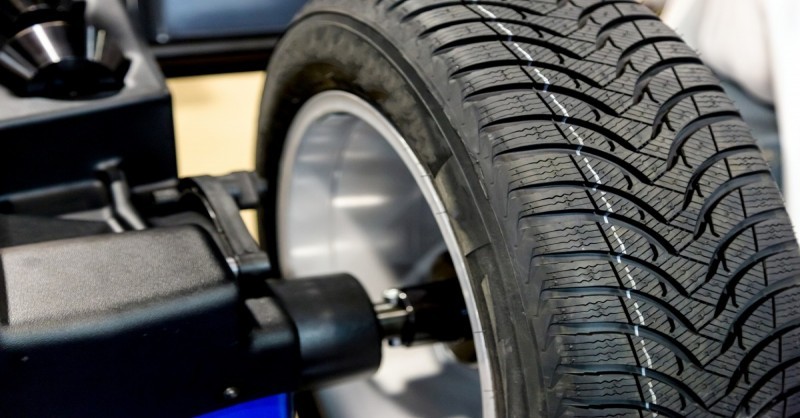How To Bring Some Balance To (Tire) Life

Tires aren’t complicated. Just keep them properly inflated, rotate them every so often and don’t run over the curb and they’ll be just fine, right?
Actually, no.
Tires are critical safety equipment that must be maintained properly or you may be putting your family at risk.
For starters, balancing can’t be overlooked. A balanced tire is less likely to give off vibrations and will give you a smoother ride. Balancing extends the life of the tire.
Experts at Continental Tire caution unbalanced tires are prone to flat spots and uneven wear.
“From a driving comfort level it can cause vehicle vibration. Long term, it can result in uneven or spotty wear which would decrease the life of the tire,” said Joe Maher, product specialist for Continental Tire.
Balance—the even distribution of weight—is why ballerinas can stand on the tips of their toes. Improper balance can cause them severe injury. In much the same way unbalanced tires hamper vehicle performance, causing the wheel to roll unevenly or shimmy.
But why and how are tires balanced?
Balancing is necessary because you have the axle and wheel, two bulky and independent pieces of machinery, coming together. The odds of the weight distribution being perfect the first time is astronomical. Small weights are discreetly attached to the wheel to balance a tire.
A pothole, improper inflation or the balancing weights themselves falling off can cause a tire to fall out of balance.
Even if your vehicle is perfectly aligned and outfitted with state-of-the-art wheels, unbalanced tires will lack durability and performance will suffer. Maher said a balance test isn’t required every time the tires are rotated, though that would be the best time to ask since they’re already coming off the vehicle.
Maher offers the follow advice about tire balancing:
- Check your tires frequently for signs of wear. Alert your service advisor if tread wear looks uneven or you see bald spots, side wear or cracked sidewalls.
- Check the air pressure and make sure the valves are covered properly.
- Ask your service adviser if your tires need to be rebalanced. Tires are balanced during the initial installation on the wheel. They aren’t routinely checked and usually are not rebalanced during a basic rotation.
- Uneven wear, flat spots or a vibration in the steering column are all signs your tires could be out of balance.
- Consider alignment when rotating tires. The system must be in balance to get the most value and performance out of your vehicle.
Copyright © 2024 by Sensible Driver. All rights reserved.
